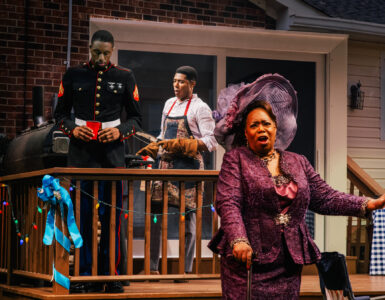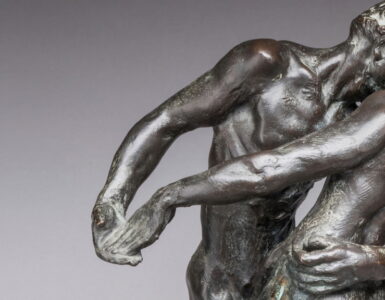Voyeuristic erotic melodrama? Taboo arthouse mystery? Perverse religious dramedy? Yes. Canadian iconoclast Bruce LaBruce’s latest opus is all these things and more. Remaining true to his roots as a Queercore artist exploring primal taboos and sexually explicit storytelling, LaBruce cleverly propels the Greek myth of self-obsessed youth Narcissus to extreme dramatic lengths. Saint-Narcisse is a loving homage to seventies filmmaking and an amusing mystery with flickers of dark humor.
Montréal, 1972. Classically handsome, 22-year-old Dominic (Félix-Antoine Duval) is fascinated with his own image. He contemplates his form in front of the bathroom mirror, gazes at his own reflection in his motorbike’s side mirror and frequently takes selfies with his flash polaroid camera.
In an early scene, an aggressive street walker tries to pick him up. When Dominic rejects her, she enigmatically warns, “Don’t try to know yourself too much.” Meanwhile, he is haunted by glimpses of a tall, hooded man. But is he a figment of his imagination?
After his loving grandmother dies (actor uncredited), Dominic uncovers a buried secret. Pleading letters from his mother Beatrice (Tania Kontoyanni) reveal she didn’t die giving birth to him after all. Immediately, Dominic embarks on quest to locate her and explore his family origins. He motors to a rural part of Québec, to the tiny village of Sainte-Narcisse (population less than 1,000) and inspects its graveyard by night. He is startled to see a child’s headstone that bears his own name. He learns that locals regard Beatrice Beauchamp as a witch who resides with a “woman who never gets old.” Dominic is drawn to a gaggle of monks. The head priest seems startled by Dominic’s appearance, and warns him against engaging with the monks while they are sequestered.
Curious, Dominic trespasses on Beatrice Beauchamp’s property and on the monastery grounds. Clues are everywhere for this inquisitive and impudent fellow.
Reunited with his mother, who believes the letters he furnishes are proof, she stubbornly states “I think I would know my own son.” Beatrice has a Gypsy-like beauty and claims she summoned him. Irene – her young companion – resents the intrusion. “He only takes pictures of himself. I mean, who does that?” sneers Irene (Alexandra Petrachuk). It’s a hilarious jab at today’s rampant navel-gazing.
Dominic also discovers that he has a twin brother Daniel (also played gorgeously by Duval). A foundling, Daniel was raised in a monastery run by a depraved priest Father Andrew (Andreas Apergis), who is unnaturally obsessed with both Saint Sebastian and the sweet-faced Daniel.
There’s some spiky dialogue to entertain us while the increasingly improbable story points intrigue us. Numerous orgasmic erotic scenes earn bonus points for tasteful representation of diverse encounters.
The film’s photography is exquisite, having been shot by legendary Québecois cinematographer Michel LaVeaux, a luminary of the Québec film scene since the seventies. Although digital, it has the style and atmosphere of a Québec 35mm movie from that era. The haunting original score by Christophe Lamarche-Ledoux adds frisson with its unsettling blend of dreamy romantic themes and contemporary refrains. An animated sequence comprised of sketches is stark and beautiful.
Mysterious and erotic – Bruce LaBruce’s twincestuous tale of doppelgängers is a bizarre odyssey into sexual depravity, revenge, and redemption.
This review first appeared in Filmink Australia.







